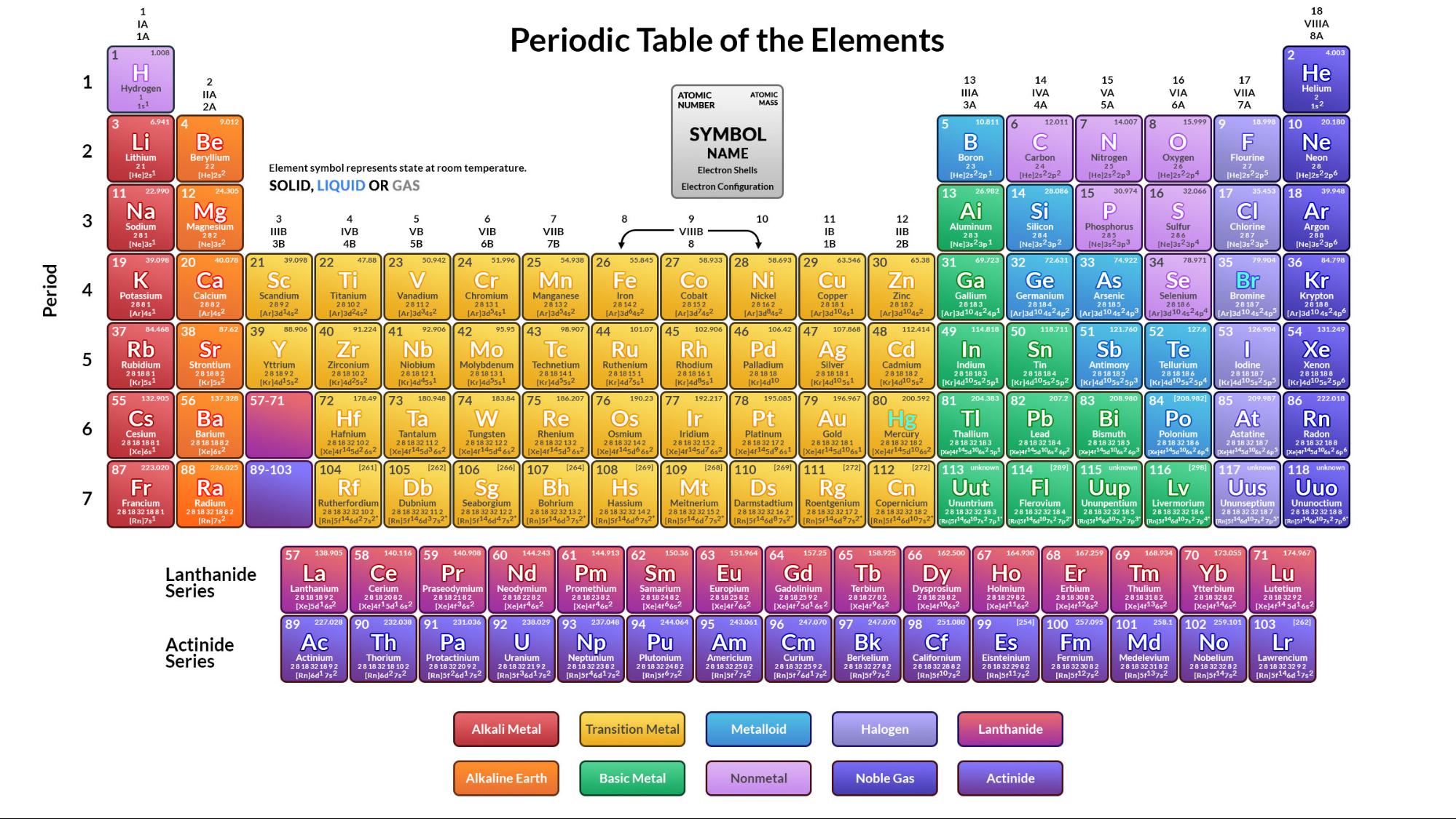
We can sort the elements into large classes with common properties: metals (elements that are shiny, malleable, good conductors of heat and electricity-shaded yellow) nonmetals (elements that appear dull, poor conductors of heat and electricity-shaded green) and metalloids (elements that conduct heat and electricity moderately well, and possess some properties of metals and some properties of nonmetals-shaded purple). Other elements are not shiny, malleable, or ductile, and are poor conductors of heat and electricity. For example, many elements appear shiny, are malleable (able to be deformed without breaking) and ductile (can be drawn into wires), and conduct heat and electricity well. Many elements differ dramatically in their chemical and physical properties, but some elements are similar in their behaviors. Elements in the periodic table are organized according to their properties. For the table to fit on a single page, parts of two of the rows, a total of 14 columns, are usually written below the main body of the table.įigure 2. However, IUPAC recommends that the numbers 1 through 18 be used, and these labels are more common.


In the United States, the labels traditionally were Roman numerals with capital letters. Groups are labeled at the top of each column. The elements are arranged in seven horizontal rows, called periods or series, and 18 vertical columns, called groups. Each box represents an element and contains its atomic number, symbol, average atomic mass, and (sometimes) name. A modern periodic table arranges the elements in increasing order of their atomic numbers and groups atoms with similar properties in the same vertical column (Figure 2). The modern statement of this relationship, the periodic law, is as follows: the properties of the elements are periodic functions of their atomic numbers. You can view the transcript for “The Periodic Table: Crash Course Chemistry #4” here (opens in new window).īy the twentieth century, it became apparent that the periodic relationship involved atomic numbers rather than atomic masses. (credit a: modification of work by Serge Lachinov credit b: modification of work by “Den fjättrade ankan”/Wikimedia Commons) (a) Dimitri Mendeleev is widely credited with creating (b) the first periodic table of the elements. Although Mendeleev and Meyer had a long dispute over priority, Mendeleev’s contributions to the development of the periodic table are now more widely recognized (Figure 1).įigure 1. The discoveries of gallium (1875) and germanium (1886) provided great support for Mendeleev’s work. But Mendeleev went one step further than Meyer: He used his table to predict the existence of elements that would have the properties similar to aluminum and silicon, but were yet unknown. Both published tables with the elements arranged according to increasing atomic mass.

Fluorine (F), chlorine (Cl), bromine (Br), and iodine (I) also exhibit similar properties to each other, but these properties are drastically different from those of any of the elements above.ĭimitri Mendeleev in Russia (1869) and Lothar Meyer in Germany (1870) independently recognized that there was a periodic relationship among the properties of the elements known at that time. For example: Li, Na, and K are much more reactive than are Ca, Sr, and Ba Li, Na, and K form compounds with oxygen in a ratio of two of their atoms to one oxygen atom, whereas Ca, Sr, and Ba form compounds with one of their atoms to one oxygen atom. However, the specific properties of these two groupings are notably different from each other. A second grouping includes calcium (Ca), strontium (Sr), and barium (Ba), which also are shiny, good conductors of heat and electricity, and have chemical properties in common. One such grouping includes lithium (Li), sodium (Na), and potassium (K): These elements all are shiny, conduct heat and electricity well, and have similar chemical properties.



 0 kommentar(er)
0 kommentar(er)
